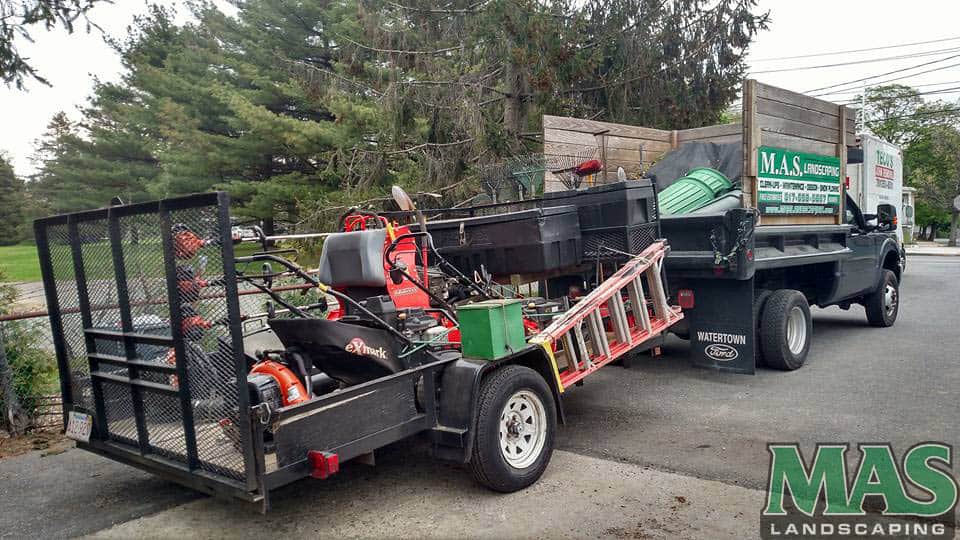Efficient Spring Yard Cleanup: Top 7 Proven Tips for 2024
Introduction
Getting ready for the growing season with an efficient spring yard cleanup can be a game changer for your outdoor space. If you’re short on time, here’s a quick rundown:
1. Remove debris: Clear sticks, leaves, and other winter leftovers.
2. Prune trees and shrubs: Trim for health and growth.
3. Prepare planting beds: Add compost and remove weeds.
4. Lawn care: Rake, fertilize, and consider reseeding.
5. Check irrigation: Ensure sprinklers and hoses are functional.
Winter can leave your yard looking less than stellar. To prepare your yard for a vibrant spring and summer, it’s crucial to tidy up and address any maintenance issues. This not only enhances curb appeal but also sets the stage for healthy plant growth.
Spring is a time of renewal, making it the perfect season to transition your yard from winter dormancy to summer flourish. Efficiently cleaning your yard now can save you headaches later and provide a clean slate for new growth.
Up next, we’ll dive into the details of planning your spring yard cleanup to maximize efficiency and results.
Planning Your Efficient Spring Yard Cleanup
Spring is a time of renewal, making it the perfect season to transition your yard from winter dormancy to summer flourish. Efficiently cleaning your yard now can save you headaches later and provide a clean slate for new growth.
Checklist
Creating a checklist ensures you don’t miss any important tasks:
- Remove Debris: Pick up litter, dead leaves, and branches.
- Prune Trees and Shrubs: Trim dead or diseased branches.
- Prepare Flower Beds: Add compost and remove weeds.
- Lawn Care: Aerate, seed, and fertilize your lawn.
- Mulch: Apply fresh mulch to beds and borders.
- Inspect Tools: Clean and sharpen garden tools.
Timeline
Timing is everything for an efficient spring yard cleanup. Here’s a simple timeline to follow:
- Early Spring (March to April):
- Start by removing debris and pruning trees and shrubs.
-
Begin lawn care tasks like aeration and overseeding.
-
Mid-Spring (April to May):
- Prepare flower beds and plant hardy perennials.
-
Apply mulch to beds and borders.
-
Late Spring (May to June):
- Plant annuals and tender perennials after the last frost.
- Inspect and repair fences, trellises, and garden structures.
Weather Considerations
The weather plays a crucial role in your yard cleanup. Here’s what to keep in mind:
- Temperature: Wait until temperatures are consistently above 50°F before planting most perennials.
- Rainfall: Plan tasks like lawn aeration and fertilizing on dry days to avoid compacting the soil.
- Frost Dates: Be aware of the last frost date for your region to avoid planting too early.
Local Climate
Different regions have unique climates, affecting when and how you should clean up your yard:
- Northern States: Start cleanup in late March to early April. Focus on removing snow mold from lawns and pruning trees.
- Southern States: Begin as early as February. You can start planting hardy perennials and annuals sooner.
- Coastal Areas: Consider the salt spray and wind. Choose salt-tolerant plants and focus on windbreaks.
By customizing your approach based on your local climate, you can ensure a more effective and efficient spring yard cleanup.
Example Case Study
Jane, a homeowner in the Midwest, followed this efficient spring yard cleanup plan. She created a checklist, timed her tasks according to the weather, and considered her local climate. By early May, her yard was ready for new growth, and she enjoyed a lush, vibrant garden throughout the summer.
Up next, we’ll explore the essential tools and equipment you’ll need for a successful yard cleanup.
Essential Tools and Equipment for Yard Cleanup
Having the right tools can make all the difference in your efficient spring yard cleanup. Here’s a breakdown of the essential equipment you’ll need:
Pruners
Pruners are vital for trimming and shaping your plants. They help remove dead or diseased branches, which can improve plant health and stimulate new growth.
Example: Jane used her pruners to shape her overgrown shrubs, making them look neat and encouraging healthier growth.
Rakes
Rakes help gather leaves, grass clippings, and other debris. A good rake should be sturdy and not missing any tines.
Tip: Consider a Half Moon Edger for creating clean lines between your lawn and garden beds. This tool can make a significant visual impact with minimal effort.
Lawnmowers
A reliable lawnmower is crucial for keeping your grass at the right height. Regular mowing helps promote a healthy lawn and prevents weeds from taking over.
Pro Tip: Ensure your lawnmower blades are sharp. Dull blades can tear the grass instead of cutting it, leading to a less healthy lawn.
Compost Bins
Composting yard waste like leaves and grass clippings can create rich, organic fertilizer for your garden beds. This reduces waste and enriches your soil naturally.
Fun Fact: Composting not only helps your garden but also reduces landfill waste. It’s an eco-friendly way to recycle organic materials.
Wheelbarrows
Wheelbarrows are indispensable for transporting heavy materials like soil, mulch, and debris. They save time and reduce the physical strain of manual hauling.
Tip: Choose a wheelbarrow that’s sturdy and easy to maneuver. This will make your cleanup tasks quicker and more efficient.

By equipping yourself with these essential tools, you’ll be well-prepared to tackle your yard cleanup tasks efficiently. Next, let’s dive into the step-by-step process to get your yard in top shape for the spring season.
Step-by-Step Cleanup Process
Trees and Shrubs
Pruning your trees and shrubs is crucial in early spring. Remove any dead branches to promote healthy growth and prevent potential hazards.
Tip: Use sharp pruners for clean cuts, which help the plant heal faster. Trim back overgrown branches and shape your hedges to give them a neat appearance.
Shaping hedges can drastically improve the look of your yard. Trim them to maintain their shape and size, ensuring they don’t overtake other plants or structures.
Perennials and Grasses
Cutting back perennials and ornamental grasses is essential. Remove any dead leaves and stalks from perennials that you didn’t get to in the fall. This clears the way for new growth.
Tip: Use scissors to get into tight spaces where pruners might not fit.
Dividing perennials like daylilies or hostas can rejuvenate them and promote more blooms.
Transplanting is also best done in early spring when the plants are still dormant or just starting to grow.
Beds and Borders
Cleaning your beds and borders is the next step. Remove any dead plants, leaves, and debris. This helps prevent diseases and pests.
Mulching is vital for moisture retention and weed suppression. Spread a 2-4 inch layer of mulch, but keep it away from the bases of trees and shrubs to prevent rot.
Edging your beds creates a clean line between your lawn and garden beds, making your yard look well-maintained. Use a half-moon edger for best results.
Composting
Leaf shredding is an excellent way to start your compost pile. Shredded leaves break down faster and provide a good balance of carbon.
Pile maintenance is key. Turn your compost pile regularly to aerate it and speed up decomposition. Keep it moist but not soggy.
Tip: Composting yard waste turns debris into valuable fertilizer for your garden beds.
Lawn Care
Soil testing is the first step in lawn care. Knowing your soil’s pH and nutrient levels helps you choose the right fertilizer.
Seeding or overseeding can fill in bare patches and thicken your lawn. Early spring is a good time to do this.
Fertilizing your lawn gives it the nutrients it needs to grow. A 20-5-10 mixture is ideal for early spring.
Pro Tip: Use a spreader for even application of seed and fertilizer.
Paths and Patios
Raking gravel on paths and patios keeps them looking neat.
Refilling joints between pavers prevents weeds from taking root.
Pressure washing removes dirt and grime, making your paths and patios look brand new.
Fences and Trellises
Repairing any damaged sections of your fences and trellises ensures they remain sturdy and functional.
Painting or staining can protect the wood from the elements and give it a fresh look.
Replacing any broken or rotted parts will keep your yard looking its best and prevent future issues.
By following this step-by-step guide, you’ll have a yard that’s ready to flourish throughout the spring and summer. Next, we’ll address some common questions about spring yard cleanup.
Addressing Common Spring Yard Cleanup Questions
When is the best time to start spring yard cleanup?
Temperature guidelines: Start your spring yard cleanup when the soil temperature reaches at least 50 degrees Fahrenheit. This ensures that the ground is thawed and workable. Use a soil thermometer to check if you’re unsure.
Pollinator protection: Be mindful of ground-nesting bees and other pollinators that may still be hibernating. Wait until mid-spring to remove leaf litter and cut back hollow-stemmed perennials to avoid disturbing them. This small delay can make a big difference for local wildlife.
What should a thorough spring yard cleanup include?
Debris removal: Begin by removing any litter, dog feces, dead grass, leaves, pinecones, and other debris. Wear heavy gloves to protect yourself from sharp objects like broken glass.
Pruning: Prune back dead and damaged branches from trees and shrubs. This helps promote healthy growth and prevents disease. Use hand pruners for smaller branches and a handsaw for larger ones.
Lawn preparation: Rake up any remaining leaves and dead grass to prevent fungal diseases like snow mold. Consider applying a “weed and feed” fertilizer to control crabgrass and nourish your lawn.
Beds and borders: Clean out dead growth from perennials and ornamental grasses. Work in some compost to fertilize and improve soil texture. Mulch your beds to suppress weeds and retain soil moisture.
How to handle yard waste efficiently?
Composting tips: Composting is a great way to recycle yard waste and enrich your soil. Shred leaves and small branches to speed up decomposition. Avoid composting dog or cat feces as they contain harmful pathogens.
Municipal disposal: Check with your local municipality for yard waste collection guidelines. Many areas offer curbside pickup for leaves, branches, and other organic waste. Separate recyclable materials like metal and plastic, and follow your local recycling center’s guidelines.
By addressing these common questions, you’ll be well-prepared for an efficient spring yard cleanup. Next, we’ll dive into the benefits of seasonal yard maintenance and how it can improve both your curb appeal and environmental health.
Conclusion
Spring is a time of renewal, and the benefits of an efficient spring yard cleanup are numerous. By tackling these tasks, we not only enhance the beauty of our outdoor spaces but also promote a healthier environment.
Seasonal Benefits: A thorough spring cleanup prepares your yard for the growing season. It helps plants and lawns thrive by removing debris that can harbor pests and diseases. By pruning trees and shrubs, we stimulate healthy growth and prevent potential hazards from dead or damaged branches.
Stress Relief: There’s something incredibly satisfying about seeing a clean, well-maintained yard. It can significantly reduce stress and provide a sense of accomplishment. Plus, spending time outdoors and engaging in physical activity is beneficial for our mental and physical health.
MAS Landscaping and Snow Removal: We understand that yard maintenance can be overwhelming. That’s why MAS Landscaping and Snow Removal is here to help. Our team of professionals is dedicated to transforming your yard into a pristine and inviting area. From pruning and trimming to fertilizing and aerating, we ensure your yard is ready for the blooming season ahead. Contact us today for a free estimate and let us help you make the most of your outdoor space this spring!
By following this guide, homeowners can ensure their yard is efficiently prepared for the spring season, enhancing both curb appeal and environmental health. A well-maintained yard not only looks great but also supports a thriving ecosystem, making your outdoor space a joy to behold.



